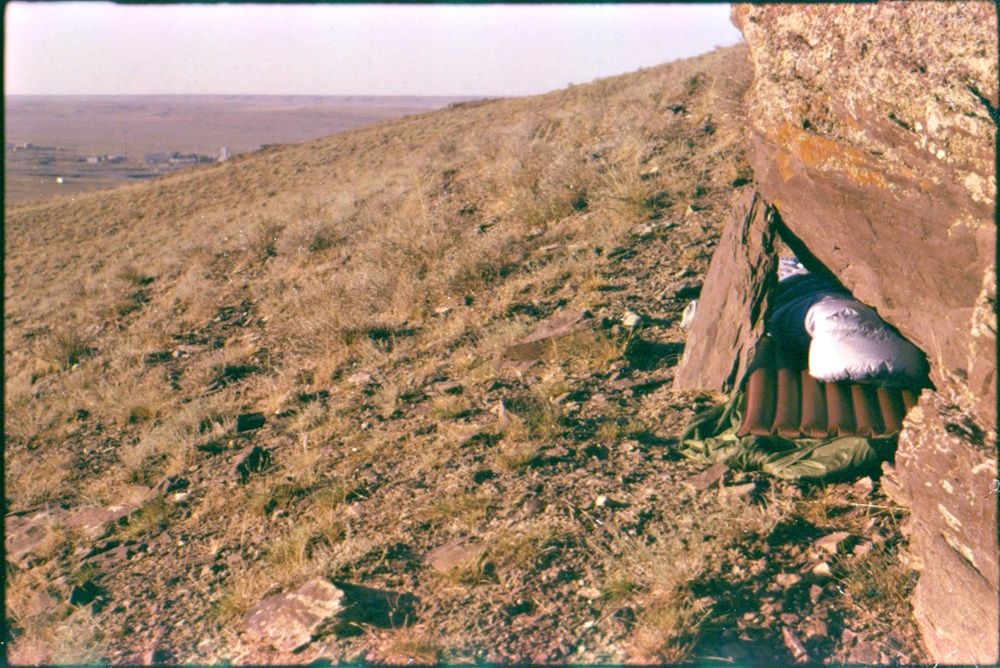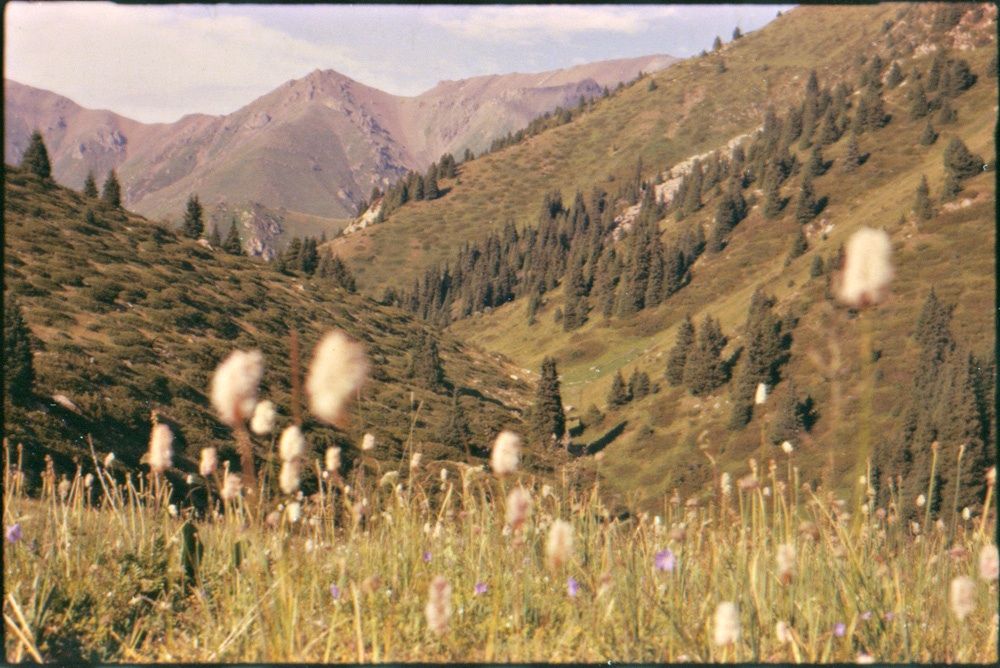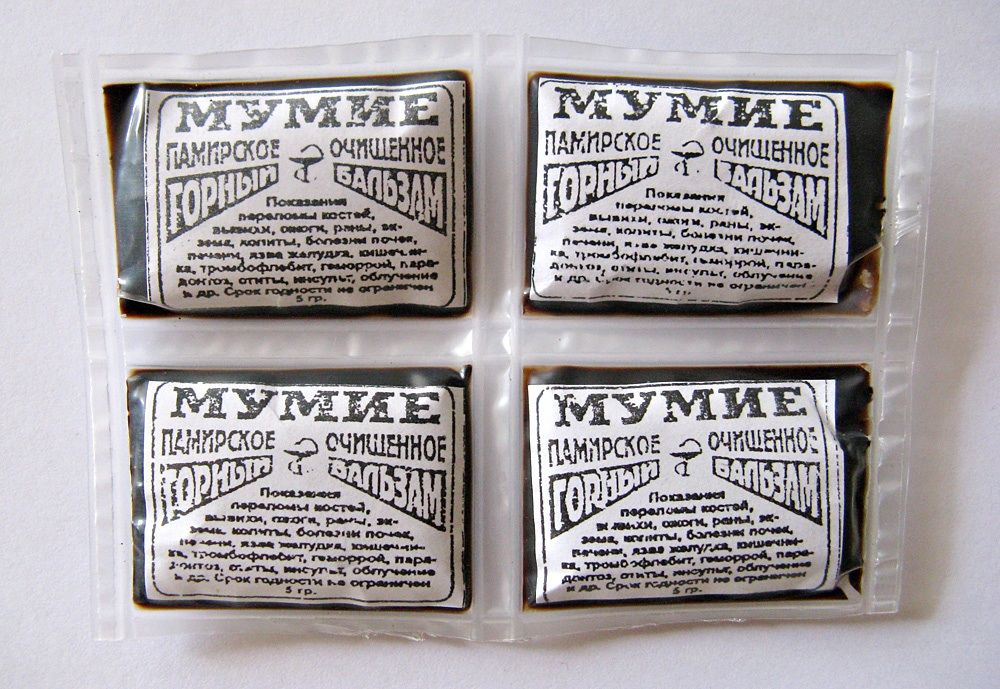
A place to sleep in the vast steppes of Kazakhstan, looking for pikas and other creatures. Photo Credit: Irina Muschik
Irina Muschik is a wildlife biologist from Germany who has been travelling East through Russia interviewing wildlife researchers for her project, Greentrousers. She has been collecting data for several ASC projects including Pika Monitoring andRoadkill Observations. Irina is on her way to Mongolia, but wrote this interesting tale of the medicinal uses of pika.
While travelling throughCentral Asia ASC connected me topika researcher, Andrew Smith, who commissioned me with a very mysterious task. He told me about a traditional medicine, called mumeo, that´s solely used in Central Asia and contains pika feces! My initial thought was: “What the heck?!”, but at the same time I was hooked. I wanted to know everything about it and would ask any Central Asian I encountered about this mysterious stuff. Andrew wanted to know if mumeo is still in use and if you can buy it on the markets. The second demand he gave me wasn´t as funny unfortunately: pikas in Asia are threatened by poisoning and I should ask around if this is still happening. I spent two month in Kazakhstan, travelling the vast country from west to east and south to north. Plenty of different pika species are inhabiting the steppes and the lesser known mountainous parts of this beautiful part of the world.

Alpine meadows with high biodiversity next to Big Almatinsky Lake in south-eastern Kazakhstan. Photo Credit: Irina Muschik
For my website interview project (
www.greentrousers.org) I planned to visit Kazakh wildlife researchers who I hoped could answer my pika questions. In the capital of Astana I first met some people from the NGO ACBK, who are working on saiga and social lapwing conservation. They told me they don´t spot steppe pikas very often (due to their night activity I guess), but sometimes hear them whistling. Interestingly the ongoing poisoning doesn´t seem to be focussed on pikas and it´s not because of fearing harvest loss as I have initially thought. They poison to try to defeating plague disease, which still occurs in gerbils, mostly in southern Kasakhstan. By poisoning the infected areas they of course eradicate all rodents who used to live there, including pikas. About mumeo they only said with a smile: “Some people still believe in it…”. It seems to be found in more mountainous areas and Eastern Kazakhstan and that´s were I went next.
I took a train and traversed the whole country. Depending from where you start this can easily take up to three days, sitting or lying around in a wagon with 50 Kazakhs and loads of fresh air, … mhh no, not really 😉 But it´s great fun and I really enjoyed my train rides in Central Asia. It´s the best way to get in touch with locals and to experience a bit of their culture. Due to my russian language skills I was able to talk to them, was invited for dinner and I even got free lessons in the history of Kazakhstan. If you ever come to Central Asia or Russia please don´t hesitate to buy a cheap 3rd class train ticket and socialize with these super hospitable people. It´s like putting the cherry on a cake of great landscape views and beautiful nature. Eventually I ended up hiking the mountain ridge south of Almaty, close to the Kyrgiz border. Andrew gave me some directions to a good pika spot on a big talus field ,and down in the city a friend showed me some pictures of his pika sightings nearby at Big Almatinsky Lake. I was very keen to see those cuties finally, but isn´t it always like this? If you really long for something, you won´t get it and therefore I never saw a single pika in Kazakhstan. Instead I encountered lots of big, fat marmots, many different species of insects, plenty of beautiful alpine flowers and an Ibisbill next to the lake.

Eventually I bought four portions of the mysterious mumeo medicine. Photo Credit: Irina Muschik
Back in the city I tried my luck with mumeo again and went to one of the bigger bazars in Almaty. A biologist whom I met said that it´s widely known in southern Kazakhstan and every pharmacy has it. You can even buy it as tablets in blister packs! He never heard about pika feces as an ingredient, but said it may contain lichen and other mountain plants. The people use it against colds and for lung diseases. Later on in the Russian Altai Mountains another biologist confirmed that mumeo contains dried out feces, but he insisted that it comes from voles and not from pikas! He also believed that it works if you´re got a cold. The people who produce mumeo would go to places in the mountains, where you can find vole scats on the bottom of rocks. By digging and scraping it off, mumeo would in the end contain the feces as well as some lichen and other plants. So for me the whole mumeo thing remains mysterious. Are there feces in it or not? And does it make sense to use scats as pre-processed mountain plants? I guess it´s a matter of belief and so far I never tried, although I carry mumeo in my first-aid-kit now because I really found it in the bazar 🙂 An old lady sold herb teas and “natural” medicine. She had 5g plastic packs of a thick black substance for 100 Tengre each (~50ct). Her instructions for how to use it goes like this: Dissolve this 5g of mumeo (which is called mumiye here) in 200 ml boiled & cooled down water. Then give 1 small spoon of this dissolution into a half-filled glas of water. You should drink three times a day 1 big spoon of it before having a meal. On the plastic package it is said that mumeo does not expire and that you can use it against disease of bones, if you burned your skin (don´t know if to drink then) and that it´s good for your stomach, guts and kidneys. It also prevents heart attacks and thromboflebitis.
Without ASC I would have never known what Central Asian traditional medicine is about and that it can be linked to pika research. I really had a lot of fun with this task and hope you enjoyed my little report about it 🙂
– Irina Muschik



